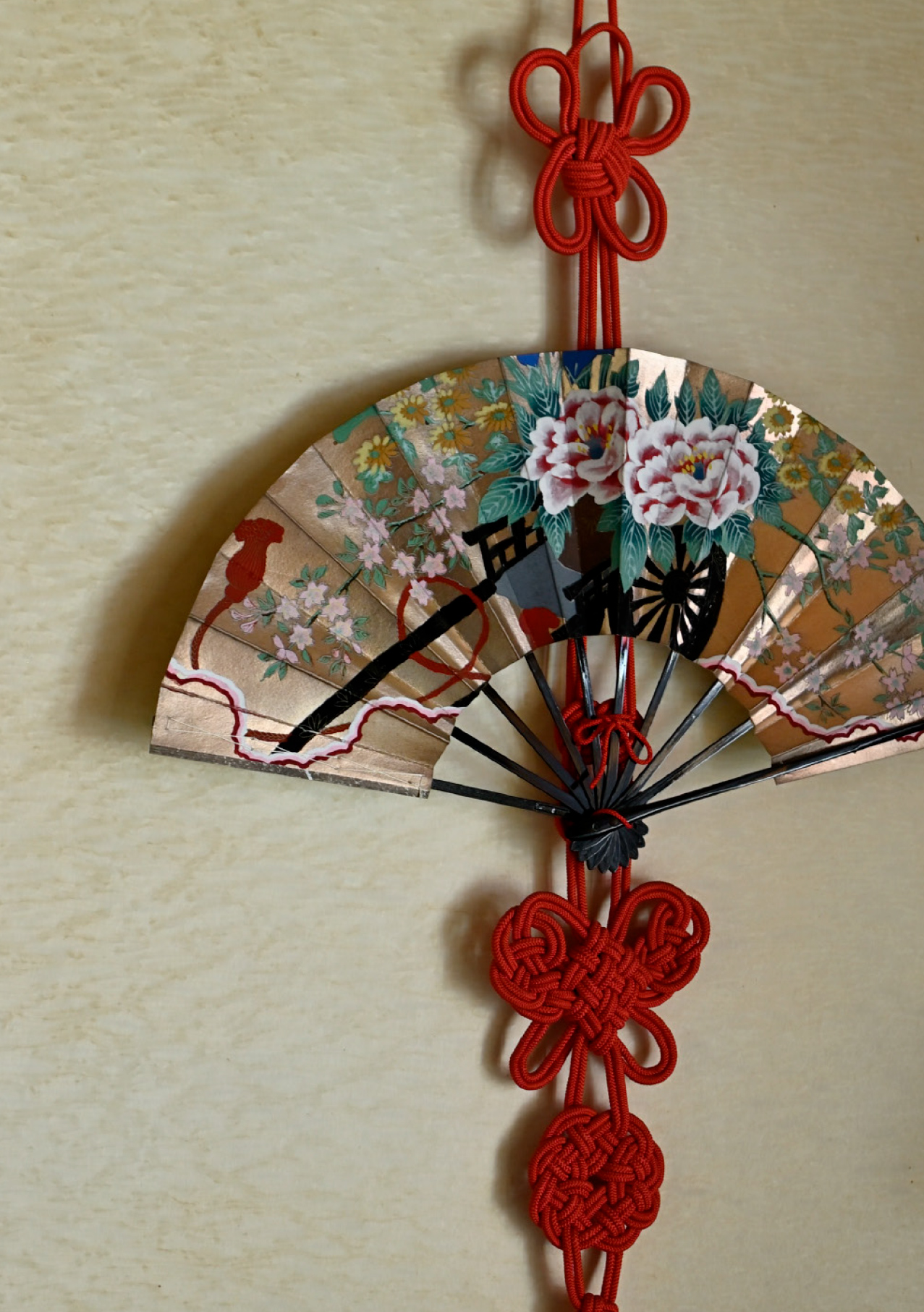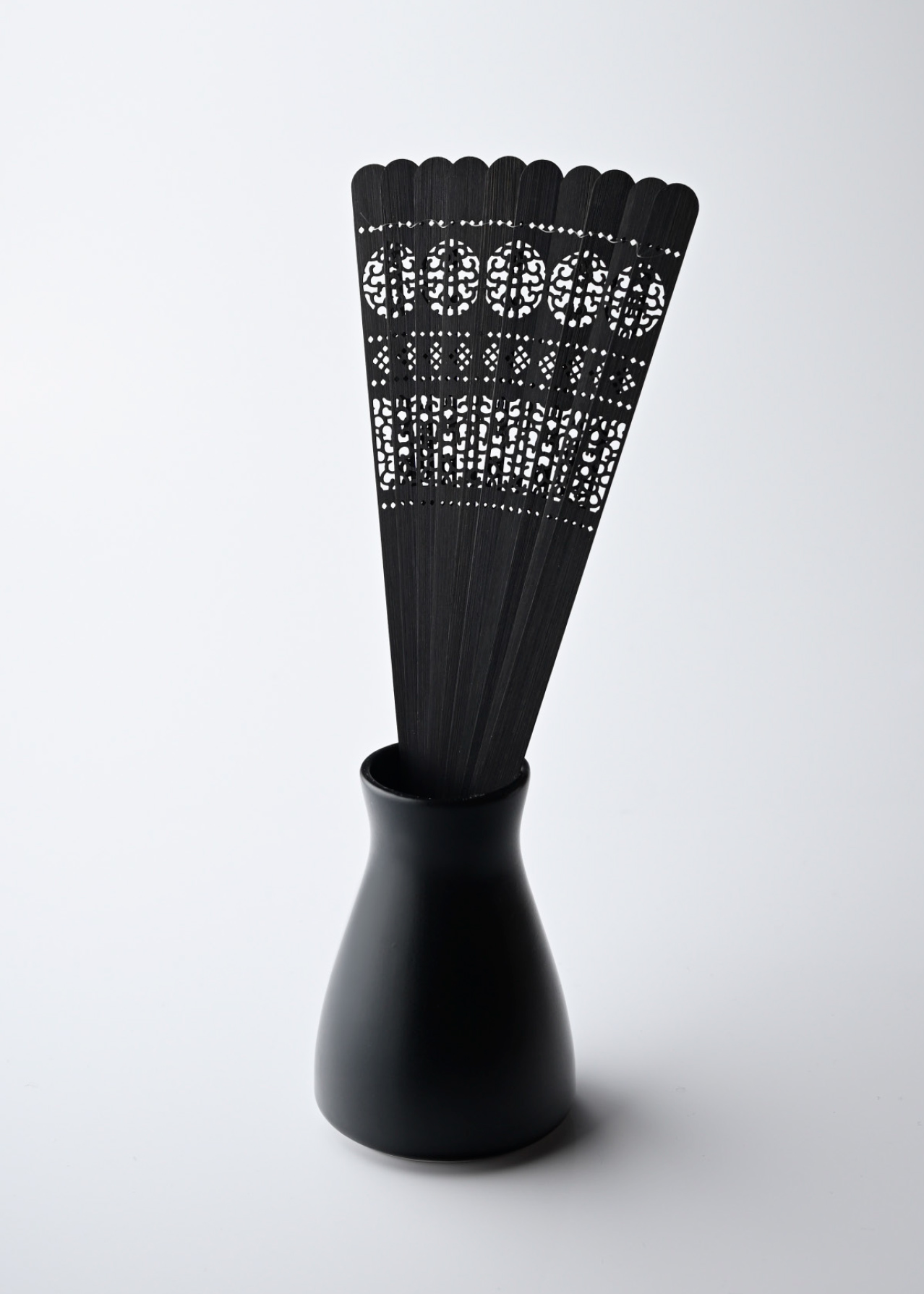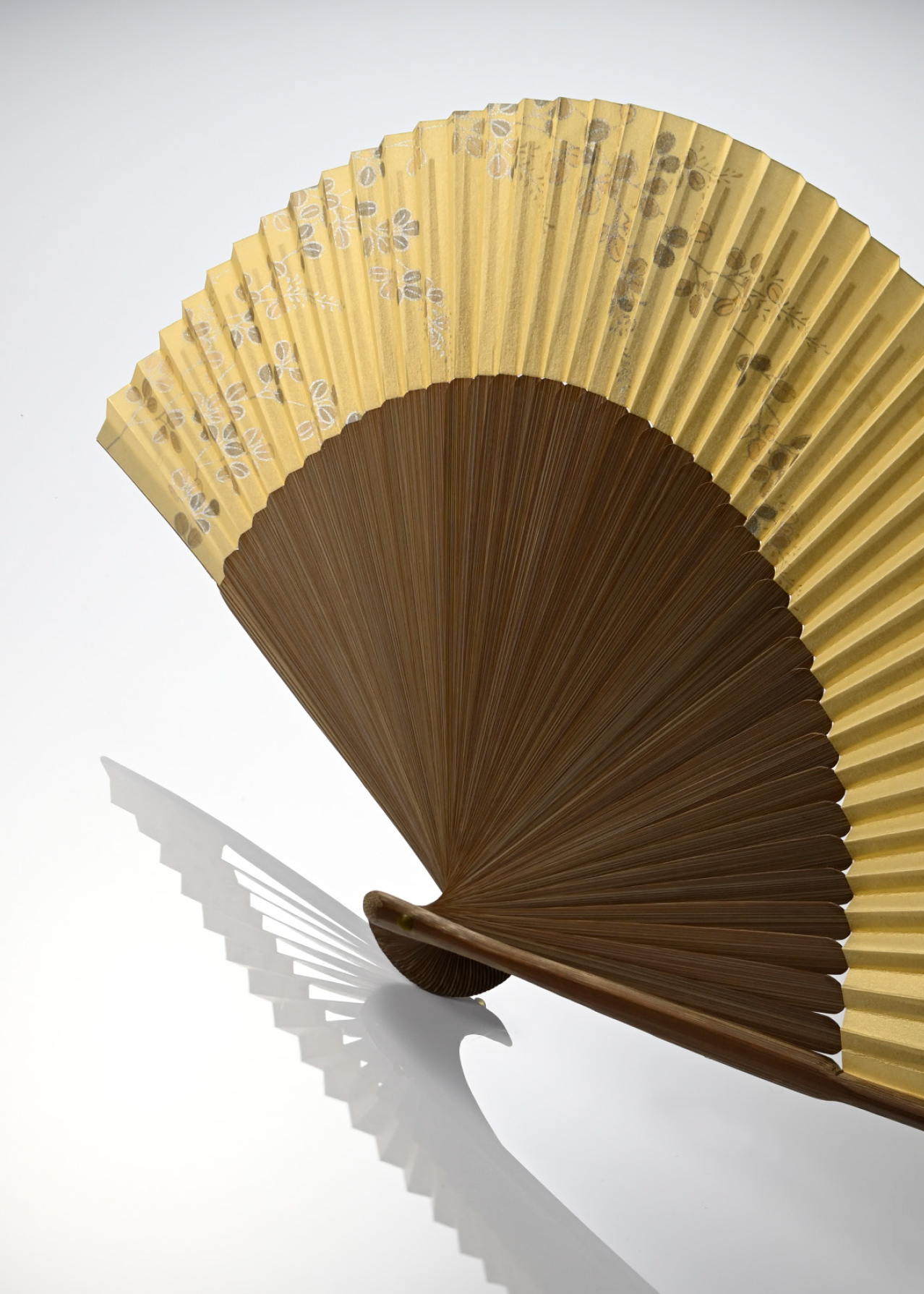京扇子 京都扇子団扇商工協同組合
KYO-SENSUFOLDING FANS 1
1
- 吉祥柄のあでやかな飾り扇子。結びひもと組み合わせてより華やかに。
扇子の起源は、うちわ同様、古墳時代(3〜7世紀頃)に中国から伝わった「翳(さしば)」とされています。そこから日本独自の扇子に発展したのは、平安時代(8世紀)頃。「木簡」という文字を書くための短冊状の薄い木の板の端に穴を開け、こよりで何枚かをつないだ「桧扇(ひおうぎ)」が作られました。鎌倉時代(13世紀)には竹の仲骨に紙を貼った「紙扇」が生まれ、これが中国に輸出されて里帰りし、室町時代(14世紀)には中国でアレンジされたものが「唐扇」としてさらに逆輸入されます。加えて中国からヨーロッパへと伝播して西洋風の扇の誕生へとつながり、それが巡って日本にも伝わり、「絹扇」が編み出されました。歴史におけるこうしたキャッチボールのなかで素材やデザインが成熟し、バリエーションが増え、日本により深く根差す文化となったといえるでしょう。現在も、国内では約90%が京都で生産され、匠の職人が80を超える制作工程を重ねて1本の扇子を生み出しています。そこからアロマデフューザーなど新しいアイデアも生まれ、人気を集めています。
The origin of the folding fan in Japan is said to be the sashiba fan introduced from China during the Kofun period (around the 3rd to 7th centuries). During the Heian period (8th century) Japan developed its own indigenous folding fan. The earliest fans were made of cypress (hi-ougi) and were constructed by punching holes in the edge of a thin wooden board used for writing (mokkan) and then connecting blades with a cord. In the Kamakura period (13th century), a paper fan (kami-ougi) was created by pasting paper onto bamboo blades, and these fans were exported to China and then later returned to Japan. During the Muromachi era (14th century), fans made in China were once again imported as kara-ougi. Meanwhile, the folding fan spread from China to Europe, leading to the Western-style fan, which later returned to Japan as the silk fan (kinu-ougi). The development of fan materials and design has benefitted from all these different varieties and cultural cross-currents, and the culture of Japanese fan making has flourished. Even today, about 90% of Japanese folding fans are produced in Kyoto, and craftsmen employ more than 80 different production processes to create a single fan. New applications for the technique are gaining popularity, including to make aroma diffusers.
 2
2
 3
3
 4
4
- :扇に好みの香を焚きしめて想いを伝えたという平安時代の人々に思いを馳せた「うつし香」。扇面に染み込ませた香が扇ぐたびに匂い立つ。
- : 透かし彫りをほどこした扇子の仲骨をデフューザーのスティックにアレンジした「扇ルーム フレグランス かざ」。
- : 夏扇子「萩」。
(1,2,3,4 すべて株式会社大西常商店)
1: A decorative fan with Kissho pattern. The beauty is enhanced by adding a knotted tassel. 2: Utsushi kō, a tribute to people of the Heian era, who burned different types of incense to express specific emotions. The aroma impregnated the surface of the fan, serving as an olfactory reminder. 3: The "Fan Room Fragrance Kaza". The open-worked fan structure serves as an aroma diffuser. 4: Hagi, a summer fan. (1,2,3,4 Ohnishi Tsune Shoten)

